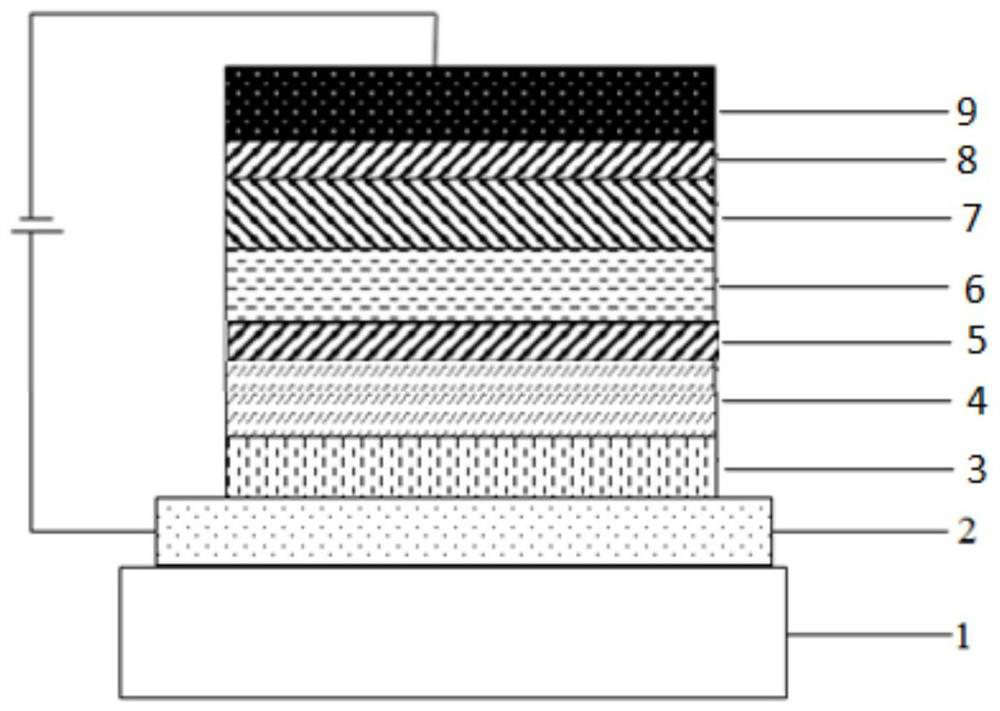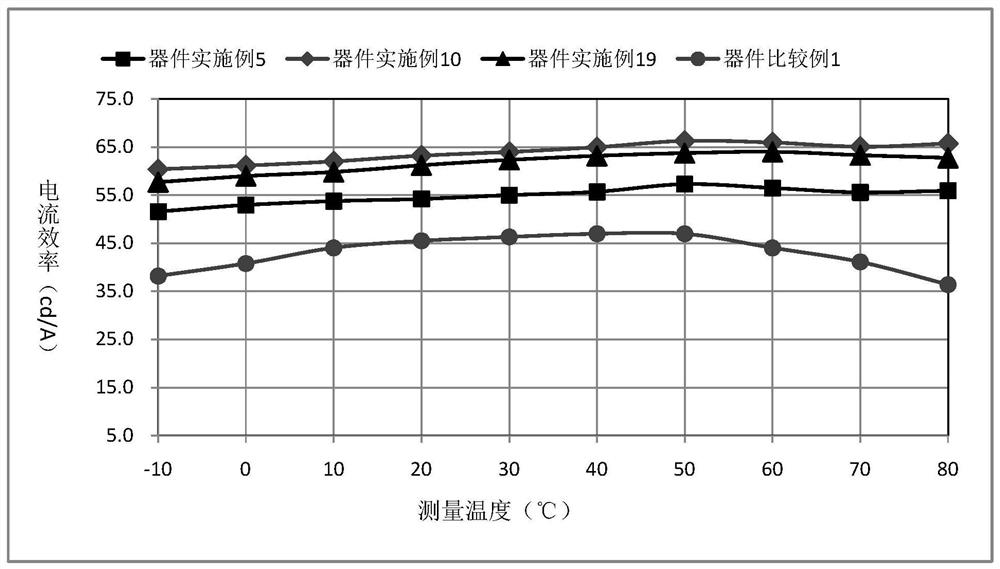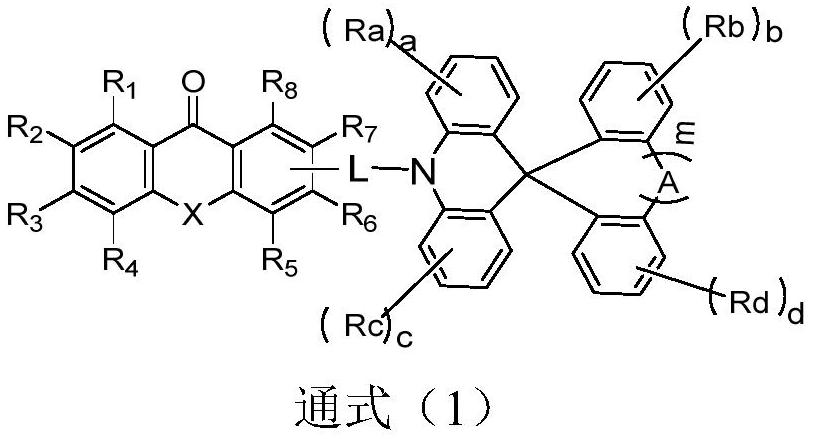A ketone-containing compound and its application in organic electroluminescent devices
A ketone compound and compound technology, applied in the application field of organic electroluminescent devices, can solve the problems of efficiency roll-off, difficult and high exciton utilization rate, high fluorescence radiation efficiency, low S1 state radiation transition rate, etc. Effects of recombination efficiency, improved luminous efficiency, and improved electron injection and transport performance
- Summary
- Abstract
- Description
- Claims
- Application Information
AI Technical Summary
Problems solved by technology
Method used
Image
Examples
Embodiment 1
[0082] Embodiment 1: the synthesis of compound 1:
[0083]
[0084] In a 250ml three-neck flask, under the protection of nitrogen, add 0.01mol raw material A1, 0.012mol intermediate B1, 150ml toluene and stir to mix, then add 0.03mol sodium tert-butoxide, 1×10 -4 molPd 2 (dba) 3 , 1×10 -4 mol of tri-tert-butylphosphine, heated to 110°C, refluxed for 24 hours, sampled and spotted on the plate, showed that no raw material A1 remained, and the reaction was complete; naturally cooled to room temperature, filtered, and the filtrate was subjected to vacuum rotary evaporation (-0.09MPa, 85°C ), purified through a neutral silica gel column to obtain the target product, with an HPLC purity of 99.19% and a yield of 62.3%;
[0085] Elemental analysis structure (molecular formula C 46 h 41 NO 2 ): theoretical value C, 86.35; H, 6.46; N, 2.19; 0, 5.00; test value: C, 86.41; ESI-MS(m / z)(M + ): The theoretical value is 639.84, and the measured value is 639.91.
Embodiment 2
[0086] Embodiment 2: the synthesis of compound 3:
[0087]
[0088] The preparation of compound 3 is the same as in Example 1, except that raw material A1 is replaced by raw material A2;
[0089] Elemental analysis structure (molecular formula C 46 h 41 NO 2 ): theoretical value C, 86.35; H, 6.46; N, 2.19; O, 5.00; test value: C, 86.42; H, 6.53; N, 2.22; ESI-MS(m / z)(M +): The theoretical value is 639.84, and the measured value is 639.93.
Embodiment 3
[0090] Embodiment 3: the synthesis of compound 11:
[0091]
[0092] The preparation of compound 11 is the same as in Example 1, except that raw material A2 is used to replace raw material A1, intermediate B2 is used to replace intermediate B1; elemental analysis structure (molecular formula C 48 h 35 NO 2 ): theoretical value C, 87.64; H, 5.36; N, 2.13; 0, 4.86; test value: C, 87.67; ESI-MS(m / z)(M + ): The theoretical value is 657.81, and the measured value is 657.95.
PUM
| Property | Measurement | Unit |
|---|---|---|
| thickness | aaaaa | aaaaa |
| thickness | aaaaa | aaaaa |
| thickness | aaaaa | aaaaa |
Abstract
Description
Claims
Application Information
 Login to View More
Login to View More - R&D
- Intellectual Property
- Life Sciences
- Materials
- Tech Scout
- Unparalleled Data Quality
- Higher Quality Content
- 60% Fewer Hallucinations
Browse by: Latest US Patents, China's latest patents, Technical Efficacy Thesaurus, Application Domain, Technology Topic, Popular Technical Reports.
© 2025 PatSnap. All rights reserved.Legal|Privacy policy|Modern Slavery Act Transparency Statement|Sitemap|About US| Contact US: help@patsnap.com



